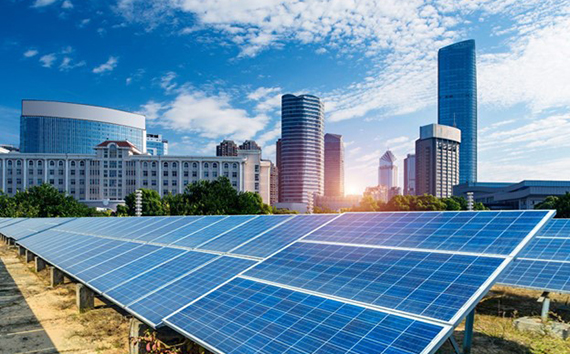Climate change is affecting the world, with a 2017 study find that a whopping 71% of all global emissions since 1988 came from just 100 companies worldwide. Corporations are responsible for the lion’s share of the global carbon emissions. Fortunately, government regulations, such as emissions allowances and carbon credits, help corporations mitigate their emissions. They can also expand their carbon allowance through a non-government-regulated voluntary carbon credit market.
So what exactly are these carbon credits, carbon allowances, and emission allowances, and how can they help your organization? We dive deep into these areas and how you can use them to help reduce your corporate emissions and remain compliant with government regulations. Continue reading to learn more.
What Is a Carbon Credit Allowance?
A carbon offset allowance is the amount of carbon you offset by purchasing a carbon credit from a carbon offset project. What is a carbon offset project? It’s a project that uses funds raised through the sale of credits to reduce an organization’s emissions.
For example, if a company wants to install a solar farm to reduce its emissions, it can offer offsets on the market, provided certain conditions are met. These offsets are generally priced per metric tonne and sold to individuals and organizations to offset the same emissions the purchaser produces.
So, suppose a company has cut its emissions as far as it can but still emits one metric tonne of emissions annually. In that case, it can reach net-zero emissions by purchasing one metric tonne of carbon offset credits from one of these projects. So while they still technically have GHG emissions, the carbon reductions they purchased make up for that.
These projects are generally privately run and regulated. Third-party organizations play a significant role in these projects, as they are responsible for certifying the projects adhere to strict rules and guidelines to ensure they are in fact benefiting the environment. Organizations can purchase these carbon offset allowances to help reach their climate goals, such as becoming a carbon-neutral company or offsetting the carbon created by a specific part of their business, like corporate travel.
What Is an Emissions Allowance?
Carbon emission regulations have many types of allowances, credits, offsets, and more. This can lead to some confusion as to what each term means. One of these oft-misunderstood phrases in this area is “emissions allowance,” or “carbon allowance.”
An emissions allowance is a certificate or permit that gives an organization the legal right to emit a certain number of tons of greenhouse gas emissions (GHG emissions). These permits or certificates go to companies participating in mandatory national or international carbon markets.
Organizations typically purchase these allowances through auction or receive them for free based on the amount of emissions they expect to release. If the organization has fewer GHG emissions than its allowance, it can sell its leftover allowances to other organizations that need them to offset excess carbon emissions.
Unlike carbon offsets, carbon allowances are not something organizations can generate through projects designed to lower corporate emissions. Instead, they are from an organization reducing its emissions to sub-forecasted levels through various other means, such as downsizing, going out of business, and relocation.

Why Are Emissions Allowances Important?

Two words: climate change. Global warming has caused severe issues, including rising sea levels and more unpredictable severe weather events. And the only way to slow and hopefully reverse global warming is by reducing global carbon emissions.
One way to effectively lower the number of metric tons of emissions entering the atmosphere is through government regulations. Emissions allowances are just those regulations. Local, state, and national governments impose these regulations to reduce the financial burden of organizations doing all they can to lower their emissions and force those not working toward carbon emission reduction to pay significant penalties.
For example, in California, power plants, industrial plants, and fuel distributors cannot emit more than 25,000 tons of carbon per year. If they do, they must purchase carbon credits to offset the amount they exceeded the limit by. If they come in under the 25,000-ton cap, they can sell the leftover carbon credits on the regulated market and earn revenue from it.
And with a businesses’ success coming down to the financial bottom line, the goal is to have these financial benefits and penalties entice businesses and organizations to work toward reducing their carbon footprints in accordance with the Paris Agreement and other climate-focused treaties and pacts.
How do Carbon Emission Credits Work?
Carbon emission credits are part of a cap-and-trade system. Companies are given or can purchase carbon credits that allow them to emit a specific amount of GHG emissions. To help reach emissions goals, this amount is reduced periodically.
The company can emit up to its GHG emissions allowance. It must purchase credit from other organizations to remain compliant if it exceeds its allotted GHG emissions. This creates a financial deterrent to exceeding emissions caps, as purchasing carbon emission credits from other organizations can greatly increase operating expenses.
If the company makes strides to reduce its emissions and has excess credit, it can sell them to other companies, creating a revenue stream that can go directly to the company’s bottom line or help fund other green projects to further reduce GHG emissions.
How Much Carbon Dioxide Is a Carbon Emissions Credit?
So, we now understand what carbon credits are, but you’re likely wondering how much carbon dioxide (CO2) is allowed by one carbon credit. That’s a relatively simple thing to explain. One carbon credit allows an organization to emit one metric tonne of CO2 or an equivalent in other greenhouse gases (GHGs), such as methane, nitrous oxide, and more.
So, if your organization releases 300 tonnes of carbon emissions or an equivalent amount of any other GHG gasses, you’d need to purchase 300 carbon credits to offset this.
How Can an Organization Purchase Carbon Emission Credits?

Organizations can buy and sell carbon credits via regulatory and voluntary emissions trading markets. The regulatory emissions trading system runs according to the cap-and-trade program mentioned earlier — a system where organizations have an emissions allowance and can sell any remaining carbon emissions credit they have left over or purchase more if needed due to excess emissions.
The regulated market — sometimes called the compliance market — is strictly managed through regional and state emissions laws, and organizations can only sell credits remaining from the cap-and-trade system. Excess emitters — organizations that exceed their carbon-emissions allowance — can also purchase emission reduction credits from this marketplace to make up for any excess emissions.
Companies voluntarily offset their carbon emissions through carbon-reduction technology, reforestation, conservation, renewable energy, carbon capture, reduced fossil fuel use, and other sustainability programs and climate action. They then offer credits for these reductions on the voluntary carbon market, where other companies and individuals can purchase the credits to offset their own emissions and lower their carbon footprints to get closer to or achieve carbon-neutral goals or other emissions-reduction targets.

What Is the Price of Carbon Credits?
Like any traded commodity, carbon credits have a price that fluctuates with supply and demand. The price generally falls if too many carbon credits are available. However, as supply tightens, the price can go up.
In 2020, the average price on the voluntary carbon market was $2.49 per metric tonne of CO2 or equivalent GHG. In 2021, though, that average price shot up to $3.82 per metric tonne.
Other factors play a role in the voluntary carbon market too. A key factor in the voluntary market is the complexity of the company’s program to reduce its carbon emissions. For example, blue carbon credit — some of the more complex carbon-reduction projects — can trade for $13 to $35 per metric tonne.
Who Runs the Carbon Markets?
Local or national governments primarily run the regulated carbon markets. Currently, a handful of these markets are operating or in the development process. The European Union emissions trading system (EU ETS) is already in full operation, as are national or subnational systems in Canada, China, Japan, New Zealand, South Korea, Switzerland, and the United States.
These regulated markets exist under national or international treaties, such as the Kyoto Protocol and the EU Emissions Trading Scheme.
In the U.S., California introduced its own state-level regulated carbon market in 2013. Its goals were to reduce emissions by 2020 to 1990 levels (which it achieved), to get 40% below 1990 levels by 2030, and to fall 80% below 1990 levels by 2050. Other goals include achieving 100% zero-carbon electric power and developing a carbon-neutral economy by 2045.
Voluntary carbon marketplaces are run by non-government organizations, but they generally have strict checks and balances to ensure only quality carbon credits make it onto the market. They’ll use third-party organizations to check each carbon-reduction project to ensure it meets their criteria before allowing the organization to offer the project for funding on its marketplace.
Stay Within Your Emissions Allowances

Reducing an organization’s carbon footprint is no easy task, but it is possible with the desire, technology, and finances to do so. Some companies may not have the technology available to remain within their emissions allowances, leaving them to rely on carbon credits and other for-purchase carbon reductions.
Fortunately, organizations have regulated markets and a wide range of voluntary carbon reduction markets to work with and purchase the credits needed to meet their goals.
Terrapass is one avenue for purchasing carbon credits from the voluntary market for your business (or as an individual). Check out all the carbon credit offers Terrapass has for your business, and choose the type and amount that’s best for you.
Brought to you by terrapass.com
Featured image:
- SEO Powered Content & PR Distribution. Get Amplified Today.
- EVM Finance. Unified Interface for Decentralized Finance. Access Here.
- Quantum Media Group. IR/PR Amplified. Access Here.
- PlatoAiStream. Web3 Data Intelligence. Knowledge Amplified. Access Here.
- Source: https://terrapass.com/blog/all-about-carbon-credits-carbon-allowances-and-emission-allowances/



